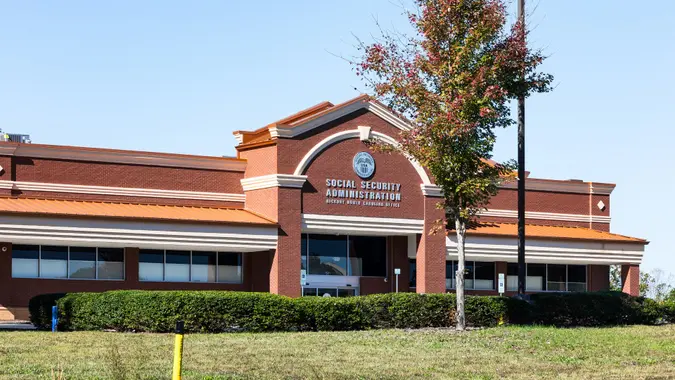How To Prepare For the Fall Social Security Changes If You’re Retiring in 2026

Commitment to Our Readers
GOBankingRates' editorial team is committed to bringing you unbiased reviews and information. We use data-driven methodologies to evaluate financial products and services - our reviews and ratings are not influenced by advertisers. You can read more about our editorial guidelines and our products and services review methodology.

20 Years
Helping You Live Richer

Reviewed
by Experts

Trusted by
Millions of Readers
Big changes to Social Security are rolling out this fall, and those planning to retire in 2026 should prepare now.
The full retirement age rises to 67, the taxable wage cap increases to $183,600 and a new Senior Deduction will reshape how benefits are taxed.
Experts say understanding these shifts early, from rechecking benefits to planning taxes and withdrawals, can help 2026 retirees avoid costly surprises and step into retirement with confidence.
Here’s how to prepare for the fall Social Security changes if you’re retiring in 2026.
Know Your Benefit Amount
The first step for those retiring in 2026 is to recheck their Social Security benefit estimate under the new rules. Log in at the Social Security Administration to see updated benefit estimates by age.
Even a small shift in the formula, just 2%, can reduce lifetime income by more than $25,000 for someone expecting $30,000 a year.
“The money worth today will also determine whether one should save the money or that one should change the current spending habits before retirement,” said J.R. Faris, president and CEO of Accountalent.
Updating benefit estimates now helps 2026 retirees decide whether to save more or adjust current spending before they stop working.
Don’t Claim Too Early
The full retirement age for individuals born in 1960 is set at 67, beginning in 2026. Retirees who choose to file at 66 will lock in permanently reduced benefits compared with waiting until full retirement age.
“The timing decision depends on your individual circumstances, but for many people, waiting until age 70 to claim benefits proves more financially advantageous,” said Nicole Asher, SVP and senior wealth management advisor with Greenleaf Trust.
Asher explained, “When you delay filing beyond your full retirement age, Social Security applies delayed retirement credits that increase your monthly payments by approximately 8% for each year you wait, up until age 70.”
For 2026 retirees, waiting just one more year to reach full retirement age could mean hundreds of dollars more each month for life.
Plan For 2026 Taxes on Benefits
The new Senior Deduction, which begins in 2025, could lower the taxable portion of Social Security benefits starting in 2026. At the same time, the increase in the taxable wage cap to $183,600 will affect higher earners approaching retirement.
“Individuals seeking to retire in 2026 will want to update their financial plan, which includes taking an inventory of assets, liabilities, sources of income and expenses,” said Ryan Monette, financial advisor at Savant Wealth Management.
Reviewing tax strategy before filing in 2026 ensures that the first year of retirement income stretches further.
Time Withdrawals Around 2026 Filing
As retirement approaches, the timing of withdrawals from IRAs and 401(k) plans becomes increasingly important.
Poor sequencing alongside new benefit rules could expose retirees to higher taxes just as employment income ends. Smart withdrawal sequencing in 2026 helps retirees avoid tax surprises and preserve savings.
Check Your Budget Before Filing
Some planners recommend running more than one version of a retirement budget to see how the numbers change. Creating one plan at current benefit estimates and another with a 2.7% COLA and full retirement age of 67 can highlight the trade-offs.
“After that, make sure to have at least 6 months of essential expenses in a liquid available reserve so January’s first COLA-adjusted payment doesn’t get swallowed up by higher Medicare Part B premiums,” said Yehuda Tropper, CEO of Beca Life Settlements.
Tropper said building the cash buffer is important because new retirees could face higher Medicare costs.
Set Up a Direct Deposit Account Now
The Social Security Administration is phasing out paper checks, and future benefits must be delivered electronically. Retirees planning to file in 2026 should log in to their SSA account and add their banking details ahead of time.
Setting up direct deposit ensures 2026 retirees receive their payments on time without delays or disruptions. Taking this simple step helps 2026 retirees finish their Social Security planning on solid footing and ensures their first payment arrives without disruption.
More From GOBankingRates
 Written by
Written by  Edited by
Edited by 

























